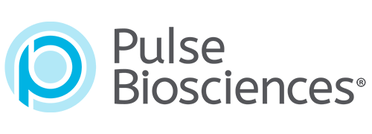“Outstanding Clearance Rates” for Sebaceous Hyperplasia Facial Lesions Seen with NPS

Pulse Biosciences' Nano-Pulse Stimulation (NPS) technology achieved “outstanding clearance rates” on sebaceous hyperplasia lesions on the face, the company reports.
Initial data indicate that 221 of 222 (99.5 percent) facial sebaceous hyperplasia lesions treated with NPS energy were rated as clear or mostly clear by clinical investigators 60 days post treatment.
NPS is a non-thermal technology that utilizes ultra-short, nanosecond energy pulses that directly interacts with the physical structure of cells without disrupting the integrity of non-cellular tissues.
This sebaceous hyperplasia study builds upon previous study results showing the safety and clinically meaningful outcomes of NPS treatment to remove seborrheic keratosis lesions. Further, successful elimination of sebaceous hyperplasia lesions substantiates the ability of NPS to penetrate into the dermis and target deeper cellular structures, such as the sebaceous gland, without damaging the surrounding dermis. No adverse events were reported during the course of either the sebaceous hyperplasia study or seborrheic keratosis study.
The sebaceous hyperplasia clinical study enrolled 73 patients, over the course of two months, each with up to four facial lesions. Patients received one or two non-thermal NPS treatments per lesion at five centers in the U.S. The study’s primary success measurement was the degree of clearing of benign sebaceous hyperplasia lesions as rated by the investigator at the final study visit. Since these lesions frequently appear on the face, another important outcome assessment was the return of the skin’s normal appearance after the lesion was removed. Fully 99.5 percent of the treated lesions were assessed as clear or mostly clear by investigators at the 60- day post-treatment follow-up evaluation. Approximately 92 percent (n=203) of treated lesions were assessed as clear or mostly clear after a single NPS treatment. Patients rated 78 percent of lesion outcomes at study end as satisfied or mostly satisfied. In some cases, mild to moderate post- treatment hyperpigmentation was noted, particularly in patients with higher Fitzpatrick Skin Types.
“We are very excited about our NPS study findings and those of the other four centers because we see many patients in the clinic with sebaceous hyperplasia who opt out of treatment simply because current thermal-based modalities lack reliable efficacy and pose a high risk of damaged skin in the treated area,” says Gilly S. Munavalli, MD, a leading cosmetic and Mohs skin cancer surgeon in Charlotte, NC. “Based on our cumulative clinical experience, NPS represents a reliable and consistent treatment that not only successfully eliminates bothersome sebaceous hyperplasia lesions, but also addresses the underlying cause of the condition by treating the sebaceous gland that resides in the dermis while sparing surrounding non-cellular skin tissue,” he says.
Moreover, “this added benefit of NPS helps reduce oil or sebum production that can contribute to other skin problems like acne,” he says.
In addition to Dr. Munavalli, other investigators in the SH study included laser and cosmetic skin surgeon Suzanne Kilmer, MD of Sacramento, CA; facial plastic surgeon James Newman, MD, Chief of Plastic Surgery at Premier Plastic Surgery Clinics in the San Francisco Bay Area, CA; Thomas Rohrer, MD, dermatologic and Mohs skin cancer surgeon in Boston, MA; and laser and cosmetic dermatologist Brian Zelickson, MD of Minneapolis, MN.
“We were delighted that the histology results and clinical findings from the Sebaceous Hyperplasia lesion study corroborated the high lesion clearance rates observed in our first controlled study of NPS treatment of seborrheic keratosis,” adds Ed Ebbers, Vice President and General Manager of Dermatology at Pulse Biosciences. “These impressive safety results and solid efficacy rates for sebaceous hyperplasia increase our confidence in pursuing other skin conditions such as cutaneous warts and acne where the ability to target undesirable cells both in the epidermis and dermis without collateral tissue damage offers a valuable competitive advantage and tremendous market opportunity.”
“We believe the results of this study represent an important development for physicians and their patients who are affected by sebaceous hyperplasia,” says Darrin Uecker, President and CEO of Pulse Biosciences. “It is the strength of our clinical data combined with growing physician recognition of NPS’ cellular mechanism of action that is building the momentum towards our planned commercial launch in 2019.”

Facebook Comments